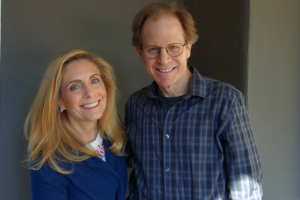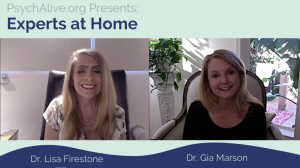Marigold Memories by Bonnie Badenoch, Ph.D.

In the last few years, I have become fascinated with the dance and architecture of our brains, just as I had become enchanted with the movement of the stars as a child. I am finding that adding this neurobiological perspective about what it means to be human opens our resources of compassion in a unique way. So as I write to you, I find myself drawn to opening this window so we can share the view together.
Let’s play with ideas about how outer experience makes its way into our brains and what happens when we remember those events. At every moment in our lives, we are taking in what the world brings us, making a representation in our brains of aspects of that encounter through linked neural firing patterns called neural nets. “Nets” is such a great image. Think of nets cast into the sea, catching all the fish within their span. Or computers networked together so that information is shared throughout the system.
One of the great and lovely mysteries of human life is how, in the act of remembering, on-off firing patterns in the brain become felt experiences, overflowing with bodily and emotional sensations, liberally laced with meaning. Often memory is such a rich experience, yet in some unimaginable way it is entirely made up of the dance of neural nets, too.
Apart from the sheer fascination of this, why do we care? Because the way we focus our attention can allow us to reawaken memory in several ways that can enrich our lives. Where attention goes, neural nets fire, releasing (and modifying) the memories stored in them. The quality of our attention, what we are expecting to happen when we attend, can change the way we experience that memory. the great and lovely mysteries of human life is how, in the act of remembering, on-off firing patterns in the brain become felt experiences, overflowing with bodily and emotional sensations, liberally laced with meaning. Often memory is such a rich experience, yet in some unimaginable way it is entirely made up of the dance of neural nets, too.
This became very clear to me in a visceral way last year after we moved from our home and garden of fifteen years. In that old house, we spent many hours every weekend planting and trimming and nurturing the growing things in our backyard—pungent roses, delicate impatiens, fuchsias like ballerinas, sunny marigolds. Afterward, I would rest in the depths of the couch in the den and bask quietly in the beauty of blooming nature stretching before me through the open french doors. Those were sweet, rich moments, times when I was truly present—not caught in past or future, but just alive with all my senses receiving and resting in the experience. Because my attention was whole, I suspect the oft-reinforced neural nets of those experiences were laden with the fullness of the sensual/sensory encounter.
When we moved, I knew that my biggest loss would be our garden since our new place had only a small yard that we weren’t supposed to modify much. I could feel loss welling up in me at the same time my mind was sending reminders that the garden experience was also within me, that my neural nets were holding many delights that I could continue to enjoy.
And here’s where attention comes in. When I focused on loss, I could feel our backyard gone from me forever. When I sank internally into the softness of the den couch, I felt much of the same sweetness of the original encounter—enough so I felt a mix of sweetness and nostalgia, without grief. I also believe that because I was so present at the time of original experiencing, I could draw on an unusual degree of richness within.
So loss and ongoing presence are both true when there is some substantial life transition. When that transition is the loss of a loved one, grief will no doubt overwhelm presence for awhile, but when that naturally abates as we adjust to new patterns in daily life, that loved one is waiting inside as well. The most important learning I have drawn from this is that the more we truly inhabit our lives in the moment, the richer the internal treasure for later.
All of this applies in another hopeful way as well. When we have been hurt, our neural nets also hold that experience, and we may be vulnerable to feeling and behaving in ways that hurt our lives. However, our brains are always open to change, especially within empathic relationships. By directing our attention toward the old wounds in the presence of someone who can provide comfort and understanding, the actual structure and function of our brains will change, providing us with new internal patterns for greater joy and healthier relationships.
There is something quite wondrous and completely hopeful about being human because as we develop our capacity for attention, we can consciously work to remove any blockages that stand in the way of a more complete sense of aliveness and connection—internally and externally. What a gift that is!
Tags: mindfulness, neuroscience, self-awareness









Dear, Bonnie I pray you remember me, you told me a long time ago to call you when my mother died, not too long ago my husband died in a very tragic accident and I am having a very difficult time forgetting. he died sept 26 2014. then my mother in July 24, 2015 its 10 months apart, I can’t seem to shake it off, too painful, iam having a hard time forgetting and moving on. sincerely laura